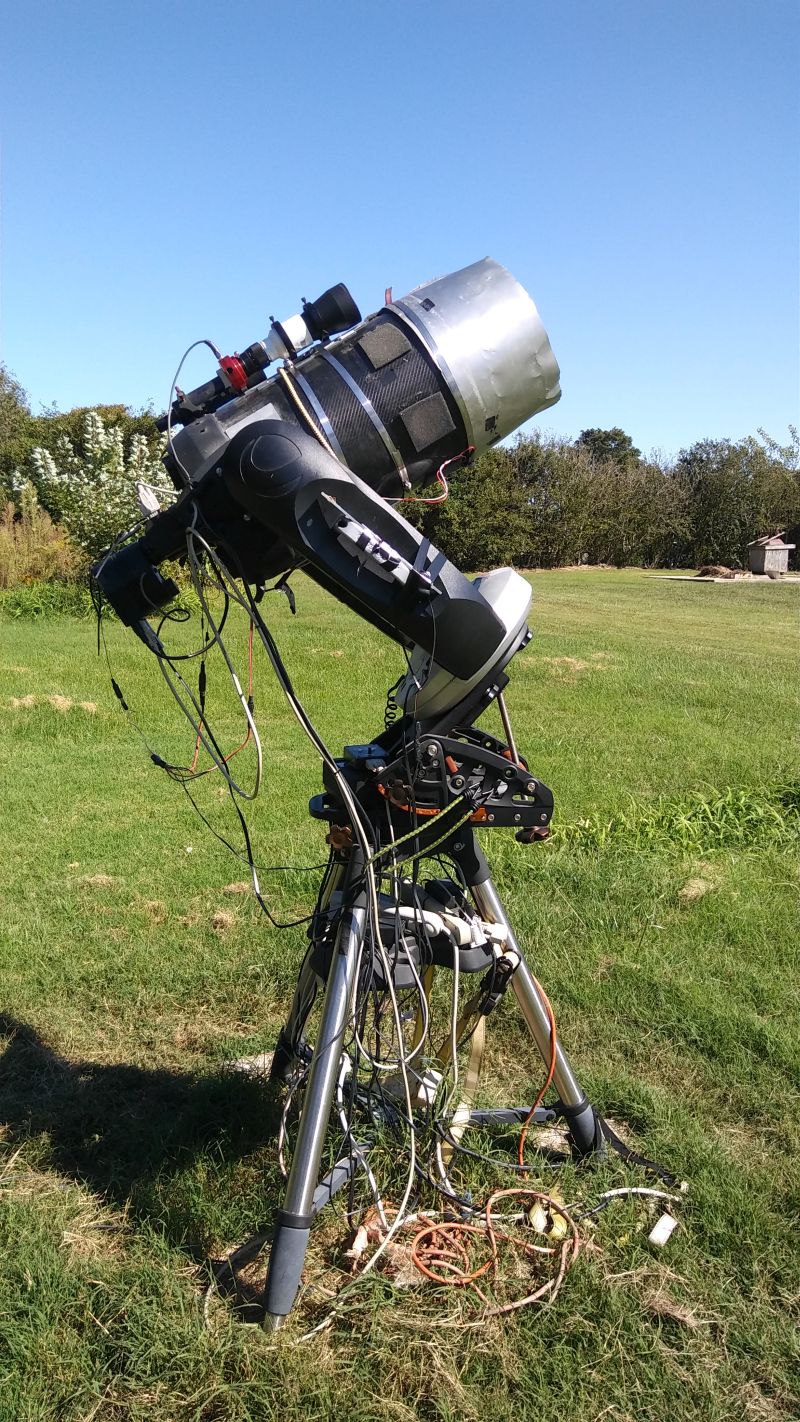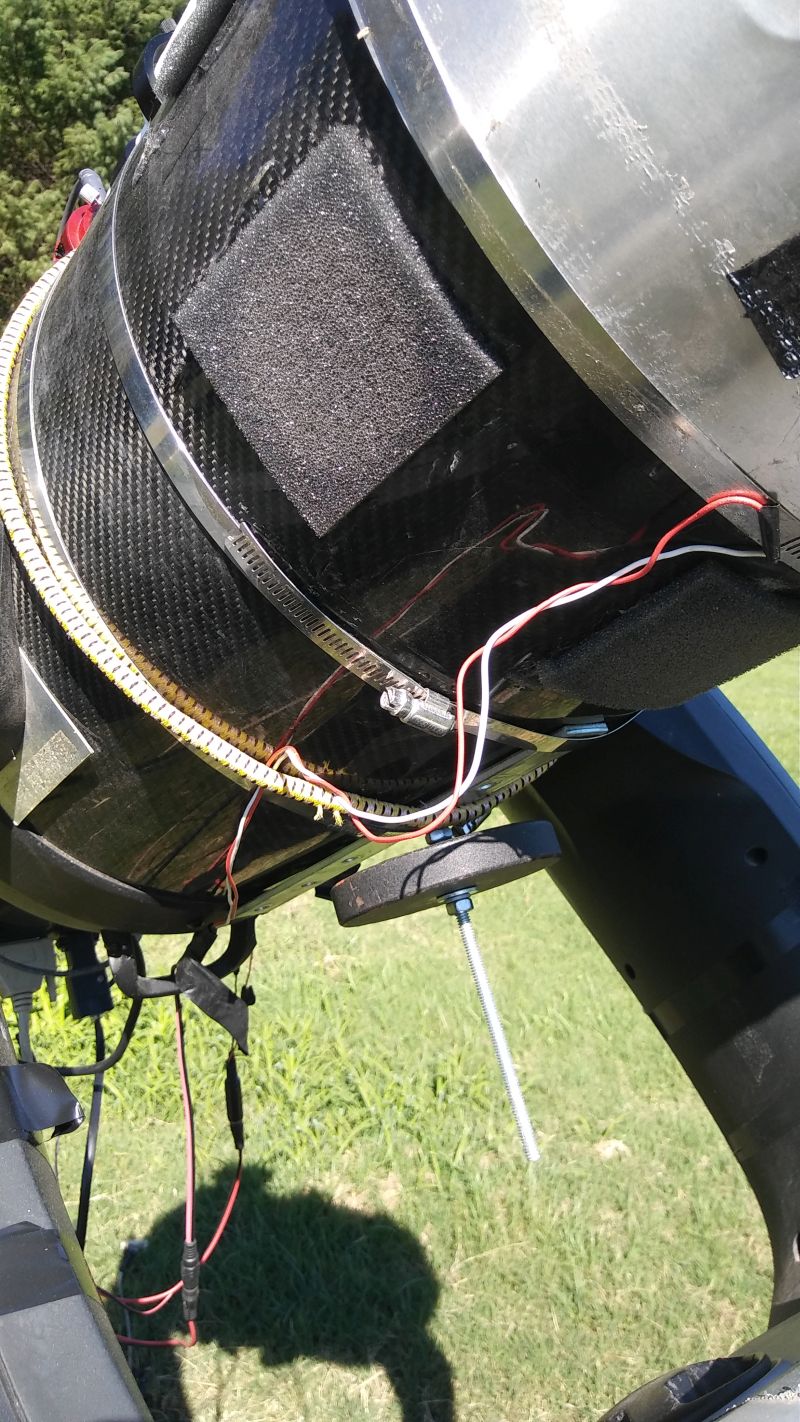
In the fall of 2014 a friend of mine told me he was getting out of astronomy. At the time Temple 20 (8″ Meade LX200) was taking automated data for a group in Europe at his observatory. He wanted me to come and get my scope. Upon arriving he offered to sell me a Meade 14″ or a Celestron 11″ CPC for pennies on the dollar. After thinking about it for a moment I chose the 11″ knowing that I just could not physically handle a 14″. My friend dubbed the scope Temple 28 since it was a twin of Wright 28 which at one time was part of the AAVSO telescope system. The naming system was the last name of the owner and a telescope number. Never did figure out how they came up with the number!
After 2 years in storage the telescope was setup in Espanola New Mexico in a roll off shelter. It survived the great SBIG fire when my ST-2000 camera caught fire, along with several local windstorms. During this time in northern New Mexico it imaged, but not well!
In the Spring of 2017 we moved to Missouri. Temple 28 was put in our backyard on a semi permanent mount. Though the site is light polluted it borders on a historic graveyard with limited lights and night time access. Not ideal but workable.

If you have followed the blogs on this site you will have read about the struggles to get this telescope up and running. The first big issue was the wedge. We are around 40 degrees north and the wedge was built for 33 degrees south. The wedge that came with the scope had been welded out of metal plates. You had to adjust the whole scope physically, turning the mount and tilting the legs. This is not a recipe for good polar alignment. So a Celestron Super wedge was obtained.
The next issue was weather. The first year here we only had a few clear nights all year long. It was almost impossible to make an adjustment then be able to test it in a timely fashion. The weather in 2018 has been a bit more amenable.
Balance was the next challenge. A weight system was constructed to balance the scope but I found out I was doing the balancing wrong! To balance a SC you tilt it vertically, balance it, tilt it horizontally, balance it, then finish the balancing by swinging it from side to side. The balance was achieved on Temple 28 pretty easily but there were still problems with tracking, especially in RA. I had used a medium sized C clamp attached to the west side handle to balance out the scope. After much testing it turns out that it was slightly too heavy. Your east side should be slightly heavier than your west side and though the scope appeared balanced it was still slightly off. It has now been replaced with some lighter weights attached to the west side. This has reduced the tracking errors with auto-guiding to less than 1 pixel. Though not the gold standard of auto-guiding it is adequate for the science imaging that I do.

After much trial and error the telescope will now plate solve. Turns out that the Celestron 6.3 focal reducer is not exactly 6.3. I actually prefer plate solving in CCDSoft and TheSky6 Pro but it is really sensitive to settings. So after finally achieving a solid plate solve in Maxim, I then took the plate scale and plugged it into CCDSoft, then played with the settings until it worked. It will now plate solve in either program.
For years I have used CCDCommander as a control program. This adequately controls all functions of imaging and allows the telescope to be used remotely. In the near future I will be trying Sequence Generator Pro to automate the imaging. This program allows you to use PHD guiding as well as several other features not included in CCDCommander.
Over all it seems Temple 28 is finally ready to do nightly work. Measuring the light curves of over-contact binary stars is something that I enjoy doing. There are thousands of stars listed in VSX (Variable Star Index on the AAVSO web page) as variable that have no measurements done on them besides the initial survey, which may or may not be accurate. There is a great deal of satisfaction to do measurements on these stars and know you are contributing to real science.